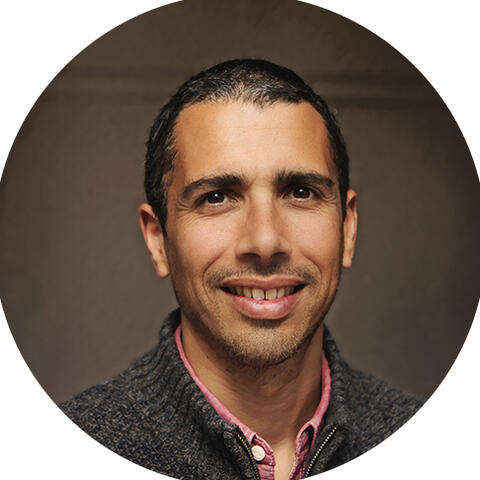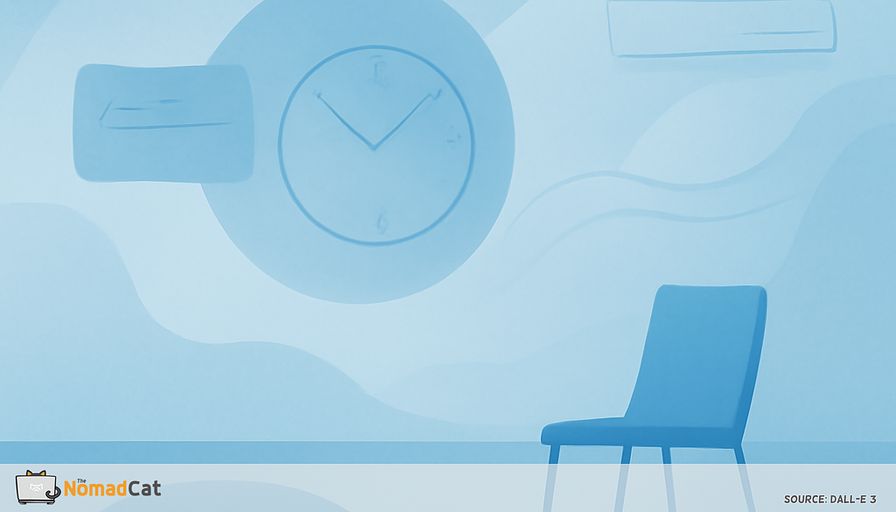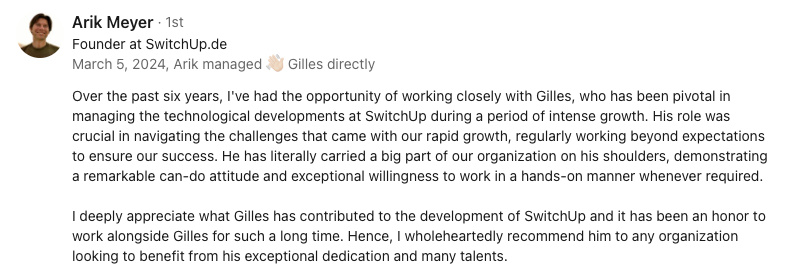Abstract:
The article argues that “slack”—having a purposeful buffer of time, money, or mental space—is often undervalued, especially among tech minimalists and freelancers who focus on efficiency. Rather than seeing slack as mere surplus or an emergency fund, the author frames it as an intentional, adaptable system that boosts resilience, creativity, and stress management. Drawing from personal experience in physics and business, as well as examples like indie professionals and author Paul Jarvis, the article illustrates how slack allows people to seize new opportunities, recover from setbacks, and avoid burnout. It offers practical, minimalist strategies for building slack, such as using simple budgeting tools, automating savings, auditing time, and scheduling buffer periods, emphasizing that even small, steady habits can rebuild lost slack. The article encourages regular reviews and adjustments to maintain this buffer, positioning slack as a foundational element for stability and growth—ultimately making life more flexible, enjoyable, and prepared for surprises.
Slack doesn’t always get the credit it deserves, especially among independent tech professionals juggling unpredictable gigs and variable income. When your work structure is always shifting—one month flush, the next a scramble—having just a bit more, whether it’s time, money, or peace of mind, can make all the difference between feeling stuck and staying resilient. Here, I look at how slack is more than just a safety net. It’s like a soft cushion that helps you bounce back, grab surprise opportunities, and keep stress at bay, especially when freelancing means you never know what’s coming next.
Inside, you’ll find ways to create slack without making life more complicated, from easy budgeting habits to handy automated tools. The discussion also covers why even minimalists benefit from having more than just the bare minimum, how to spot when you’re running low, and what to do to build slack back up. Along the way, there are examples from real indie tech professionals—including a few stories from my own path—who’ve found slack gives them more creativity and helps avoid burnout.
So, whether your gigs feel unpredictable or you just want life simple, you can build a buffer that makes sense for you. It’s a fresh way of looking at slack—something to keep life steady, flexible, and maybe even a bit more fun.
Why slack matters for tech minimalists
A buffer with purpose, not just a safety net
Slack isn’t just about having money to cover emergencies. It’s that breathing room in your week or budget that keeps things stable but flexible. In work, slack means having enough—resources, time, or energy—to handle bumps or say yes to new things without always asking for help. It’s about having extra in ways that matter: time, attention, even energy. If you build slack on purpose, you’re not just waiting for trouble—you’re making sure there’s space to try, recover, and learn. That wider view is key to understanding why slack is worth more than a rainy-day fund.
More than a surplus, slack as a living system
Slack is always intentional. It’s ready if things go wrong, but it also lets you grab new chances. Here’s how it stands apart:
- Emergency fund: just for trouble, rarely touched
- Surplus: extra left over, not really planned
- Slack: built on purpose, changes with your needs, and helps in both problems and surprises
One might see slack as a living system; it flexes and absorbs life’s bumps, and creates space for better decisions. Building slack on purpose gives more control and less stress, while leftovers tend to just drift away.
Building resilience by design
This idea isn’t just theory—it shows up in my work too, when building companies or leading teams. The most resilient people and groups I saw didn’t just get lucky. They built in time, cash, or mental slack for the unknown. My background in physics and business strategy made it clear early: systems without slack break easily. For example, when I was managing a small team in Beijing, we hit a sudden regulatory change that threatened a whole project. Because we had intentionally left a buffer in both our timeline and budget—something I insisted on after learning the hard way in Berlin with a previous startup—we could regroup, adjust our plan, and keep everyone paid. That margin of slack didn’t just save the project; it kept the team’s morale up and let us spot a new opportunity that others missed. Whether for a startup or group project, having that margin of time or cash led to staying flexible and open to growth. I keep seeing it: being resilient comes from making room for slack, not just hoping things work out.
Why minimalists need more than just enough
Minimalist planning meets tech freelancing’s wild swings
Minimalism is often about knowing your “enough” and cutting the rest. But as a freelancer or indie developer, life rarely fits that perfect box. Many tech freelancers see income swing by 30 percent or more every month. Even with a good budget, a slow month or a broken laptop can mess everything up. Without slack, even the best plans can become stressful.
Slack as a shield against scarcity thinking
If every euro is already spent, it’s easy to slip into a scarcity mindset—where every small problem feels big, and every opportunity feels risky. I remember when I first moved to Berlin and tried to live on the bare minimum, thinking it was the minimalist way. But when a client delayed payment, I panicked and took on a project I didn’t want, just to cover rent. That stress narrowed my view and made it hard to think long-term. Research shows this kind of pressure makes it tough to see beyond the next bill. With slack, it’s easier to turn down bad gigs or pass on draining projects, instead of grabbing everything out of fear. That buffer helps keep burnout away and helps keep decisions clear.
Slack opens space for creativity and rest
Slack isn’t just protection—it’s about having space for what counts. Studies show that a buffer lets people take creative risks, rest, and keep ideas fresh. Minimalism isn’t only about cutting—it’s about having freedom. Slack lets you enjoy freelance life, handling both surprises and slow spells. So, how do you actually make this buffer?
Simple systems for building slack
Keeping finances flexible with minimalist tools
You don’t need complex spreadsheets to build slack. Simple systems can be better, especially with uneven freelance income. Automation is a big help. Envelope budgeting splits your income into set categories—so you know exactly what’s set aside for bills, savings, or fun. Micro-savings apps pull small amounts into savings, often without you noticing. And recurring transfers move money before you can spend it. These hassle-free systems help keep a financial buffer, even with a fluctuating income.
- Envelope budgeting: give every euro a job, so nothing slips away
- Micro-savings: let your app round up purchases, or move spare change automatically
- Automated transfers: set them and let your buffer grow quietly
Of these, automation is especially powerful for tech minimalists. When your income jumps around, letting a tool handle the transfers means you don’t have to think about it each time. It’s one less thing to worry about, and the buffer builds up quietly in the background.
Letting automation do the heavy lifting
For freelancers, automation is a lifesaver. Automatic transfers through apps like Digit or Qapital mean your buffer grows in the background, with almost zero effort. You don’t have to remember or decide each month—it just happens. In fact, according to a 2022 survey by Indie Hackers, 68% of tech freelancers who used automated savings tools reported feeling less anxious about money, compared to only 41% who managed savings manually. Some tools even help smooth out wild income swings so things feel steadier. For me, after switching to automated transfers, I stopped worrying so much about missing a payment or forgetting to save—my buffer just grew on its own, even during lean months.
Smoothing out the bumps and freeing your mind
Apps that help smooth income can make your earnings feel more like a paycheck. You stress less about covering gaps, and your mind is freed up for better work. Slack is also about time and mental headspace—not just money. When I started using these tools, I noticed I could focus more on coding and less on spreadsheets.
Making time for slack, not just money
Slack isn’t just about cash. Time buffers—like leaving gaps between projects or protecting time off—are sometimes even more valuable. Plan real breaks and avoid filling every slot. Some freelancers block out “buffer days” after big deadlines, or set aside a day for admin or wandering. Even short breaks between meetings can help.
- Buffer periods: leave space between projects or tasks
- Structured downtime: protect breaks as a must-have part of your week
For me, blocking out a Friday afternoon for a walk or a long lunch has saved my sanity more than once. When your calendar has these buffers, you’re building in both resilience and room to create.
Auditing and protecting your time slack
Time audits and tools that help you set priorities can keep your time slack healthy. The 168 Hours time audit helps spot where your time really goes. Or, the Eisenhower Matrix can help you focus on what’s most urgent and important. Blocking out time for rest or deep work isn’t just a bonus—it boosts creativity and prevents burnout. Psychological slack is the last bit—making sure your mind always has some space.
- 168 Hours audit: see where your week actually goes
- Eisenhower Matrix: sort what matters most and plan your time accordingly
Giving your mind room to breathe
Psychological slack means not spending every euro or filling every hour. When you know there’s room, your brain can finally relax and make better choices. I remember after moving to Lisbon, I finally had a small savings buffer and a few free mornings each week. One day, instead of panicking about finding the next client, I sat in a café and mapped out a new project idea. That space—mental and financial—gave me a kind of relief I hadn’t felt in years. It’s the freedom that makes tech minimalism appealing. But slack can vanish if you don’t protect it. Catching those disappearing signals matters. It’s like leaving an empty chair at the table: at first it feels odd, but soon it’s clear—it’s nice having space for surprises or just stretching out.
How slack disappears
Warning signs your buffer is running low
Slack can run out without much warning. Financially, signals show up as a shrinking savings account, more credit use, or late bills. These can sneak up during busy or lean months.
On the emotional side, signs show up as ongoing stress, worry about money or deadlines, or even feeling jumpy seeing your bank balance. For many folks, this mental drain is the first clue slack is gone.
If things slip at work—missed deadlines, worse work quality, or skipping on training—it’s another red flag. These are all signs to rebuild slack before things get out of hand.
How to get it back
Rebuilding slack after a dry spell
When slack’s gone, the best move is to start small. Set up a tiny weekly savings transfer, or block out a short break—even if it’s just ten minutes. Research points out that small, steady habits help get slack back faster.
Letting automation handle things is almost always easier. Automatic transfers or calendar blocks rebuild slack in the background, so you don’t have to keep reminding yourself.
Peer support can also help. Connecting with others or joining a group gives accountability and new ideas. Community can make keeping slack feel easier and less lonely. Next, it helps to look at a real-life example.
Slack in action with a real-world example
Making room for opportunity
Paul Jarvis, author of Company of One, gives a clear example of planned slack. Instead of taking every client or project, he purposely limited his work schedule. This left him with extra time—whether for rest or trying something new. When the tech market sank and others scrambled, Jarvis had space to think.
Turning downtime into growth
This slack wasn’t just nice—it was smart. While some were stressed or overworked, Jarvis took the time to try new things. One project from these experiments became a big part of his income. It proves what research finds: buffer capacity isn’t just about luck. It’s about building in flexibility, adapting, and finding chances even when things are rough. In fact, a 2021 study by the Freelancers Union found that freelancers with at least two months of living expenses saved were 50% more likely to launch a successful side project or pivot during a downturn.
Designing slack into your routine
Simple lesson: set up financial and time systems so there’s always extra room. This lets you say yes to good chances, and no to burnout. Surveys show people who protect their slack stay more resilient and open to good opportunities. Building slack means making your margin for success, not waiting for luck.
With that in mind, here’s a simple way to start building your own slack.
A minimalist framework for auditing and building slack
A simple checklist for tech minimalists
Slack for tech minimalists can be very simple. Start by tracking what you earn and spend for a month—it can be on paper or a basic spreadsheet. This shows where you stand. Next, set up a small automatic transfer to a separate savings account with every payment, even if it’s not much. The size isn’t as important as doing it often.
Then, look at time. Here’s a checklist to try:
- Track what you earn and spend for a month.
- Set up a tiny, automatic transfer to savings each payday.
- Audit your time for a week. Look for wasted slots or breaks.
- Block at least one buffer period a week—lunch away from the screen, or a walk.
These steps help you keep slack, ready for surprise changes.
Try auditing your week using the 168 Hours method. This might show extra time—between meetings, or in the mornings. Blocking out one or two of these for yourself (like a walk or tech-free lunch) keeps you rested and ready. Those small changes protect the space for breaks or ideas, almost like having financial slack.
Automate what you can: recurring savings, automatic bill pay, even calendar breaks. This way, slack builds without effort. Review every month. If you see slack shrinking, adjust the transfers or time blocks. If you have too much, invest in a project or enjoy some rest. Regular checks keep slack working for you.
With these habits, slack becomes a quiet part of your routine. You won’t have to do extra work—only make life a bit lighter, more flexible, and ready for both surprises and routine days.
Slack isn’t just a backup. It’s the cushion that helps when life throws something new—client swings, sudden ideas, or just a packed week. Building a buffer doesn’t have to be hard. Simple habits like automation, envelope budgeting, and time tracking can help build space for rest and creative work, all without losing your focus on simplicity. Even a small margin makes a big difference in stress, choices, and having the freedom to say yes to good things. Whether you’re freelancing or just keeping life simple, slack helps you stay flexible and ready for whatever’s next. Sometimes, just a tiny bit more space or cash is all it takes to make things easier and spark new ideas.














